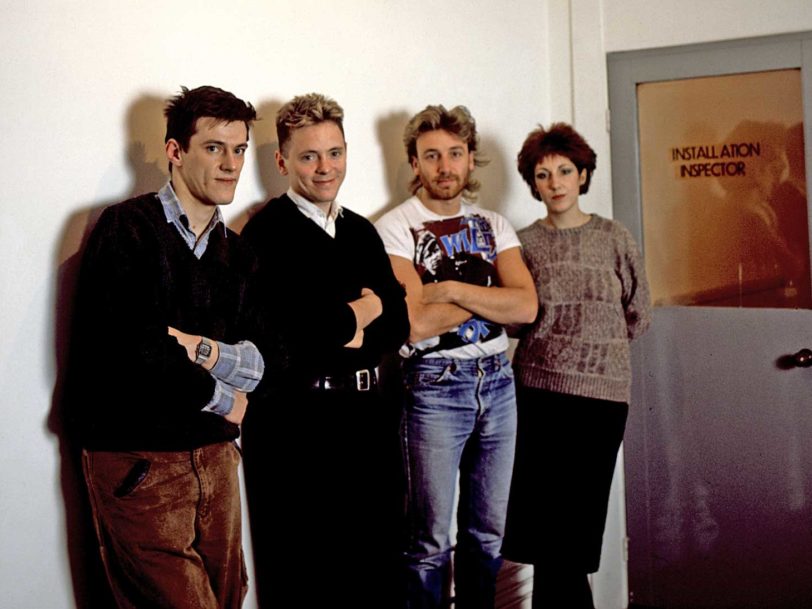New Order were always renowned for their maverick approach to the music business but, by the mid-80s, they’d become so popular they had to engage with the industry to some extent. Their terrific third album, Low-life, had been a bona fide UK hit and raised the band’s profile in the US, where their new label were hoping they’d release their next album, Brotherhood, sooner rather than later. “Warners were keen for a speedy follow-up,” drummer Stephen Morris wrote in his 2020 memoir, Fast Forward, “and we were writing, rehearsing and recording at a rate which today seems impossible.”
Listen to ‘Brotherhood’ here.
“The rock/electronic split started to surface”
Nonetheless, New Order responded positively to the demands. In the early spring of 1986, the band spent time at London’s Jam studios (in his own book Substance, bassist Peter Hook recalled “the sessions went well… we had a huge flat near Hyde Park”) and then took a trip across the Irish Sea for further recording at U2’s favourite complex, Windmill Lane. No one was in any doubt over the quality of the new material, but some tension as to how it should be best executed was building.
“It was here that the rock/electronic split started to surface,” Hook recalled. “Ever the punk at heart, I loved the guitar-based material and loved it when we played together. But the others preferred the more sequencer-led tracks. In the end, the divide was so pronounced that we ended up having the guitar-based tracks on side one and the more electronic songs on side two.”




